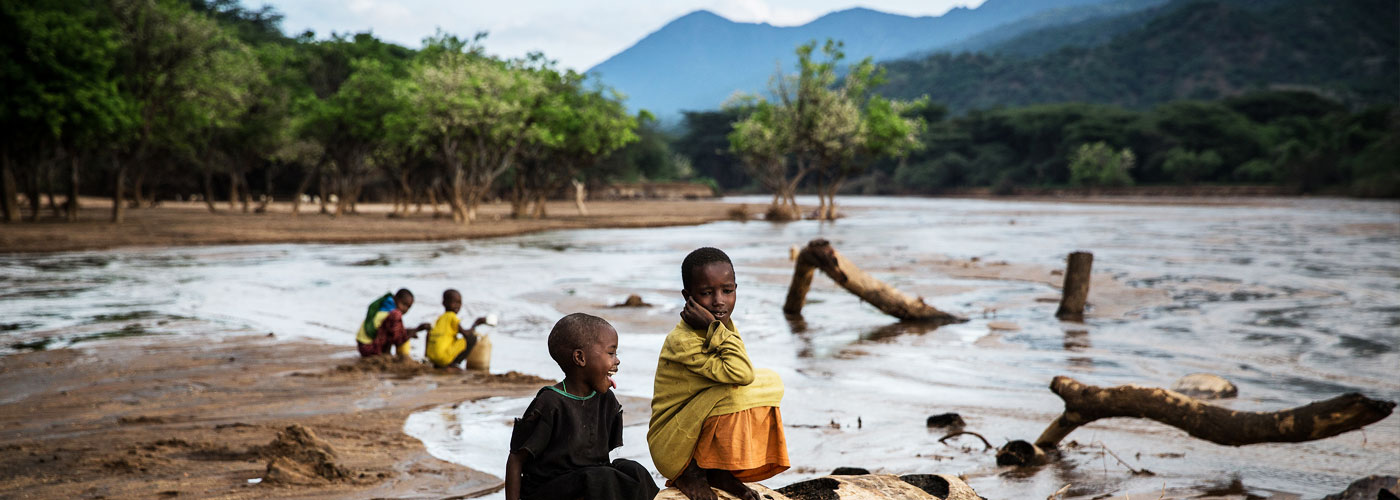Water is life, but unclean water is death.
Due to lack of access to clean water, diarrhea is second to pneumonia in deaths in children under five years of age. Water, sanitation and hygiene related illnesses and conditions are the number one cause of hospitalization in these children. In Kenya, with a population of 45 million, 17.5 million lack safe water.
Due to lack of access to clean water, diarrhea is second to pneumonia in deaths in children under five years of age. Tweet This Quote
Fortunately, there are dedicated organizations providing water solutions. Since the water shortage crisis is widespread, however, there is much to be done.
Traditionally, the problem of safe drinking water has been tasked to NGOs and non-profits. Their models frequently deliver short-term solutions like distributing bottled water in times of disease outbreak. Or building one centralized pump in a community, which isn’t always maintained. Where water pumps do exist, about 40% break down prematurely with no sustainable maintenance system in place to fix them.
Marten Susebeek, founder of Susteq, based in the Netherlands and operating in Kenya, has an alternative. He believes that everyone has a right to reliable water access. The goal of Susteq is to support long-term, clean water access that is independent of external funding.
Where water pumps do exist, about 40% break down prematurely with no sustainable maintenance system in place to fix them. Tweet This Quote
Based on a one of its kind technology created by the team of Susteq, water kiosks with a digital payment system are installed at key water supply points. Local users pay the water kiosk owner with cash and receive credits on a token to go to an automated water tap. The water kiosk owner then pays the water organization via mobile money. The price per person per year is $5.00. This small fee covers maintenance and service and is 75% cheaper than other alternatives available on the market.
The idea for the water system developed three years ago during a graduate internship at Philips. A trip to Ghana, where he witnessed the crucial need firsthand, motivated Marten to change the unreliable nature of water access.
“I started to gather with students at University of Twente, then implemented it in Ghana and got good feedback, and NGOS said ‘this is exactly the product we need,’” says Susebeek thinking back to the beginning of 2012.
This is where he met his fellow Susteq team members, including Anton Lepelaar. With his background in electrical and software engineering and experience in man-aging software security for EchoStar, a large satellite receiver manufacturer, he is responsible for managing the technical roadmap of Susteq.
Everyone has a right to reliable water access. Tweet This Quote
“We make it attractive for water service providers to place safe water points closer to people, promote local involvement and long term sustainability of the water points,” says Susebeek.
The idea of water kiosks is not new. In Zambia, for example, kiosks were introduced in 2006 serving 500,000 people and the World Bank declared them a success. However, the technical support is new. Malfunctions leave communities crippled, but the digital system accessible by computer from afar allows for immediate support.
“Our way is more innovative—we monitor our systems, and they are compatible with mobile phones, and many systems are not,” explains Susebeek.
Access to water and sanitation also means fewer hours fetching water for women, more hours in school for girls, and fewer health costs. Tweet This Quote
In rural areas, water for kiosks sometimes comes directly from a well, spring, stream or lake after treatment. Historically, water development is marked by exploitation and disorganization. But Susteq seeks out local farmers when possible and negotiates profit sharing for access to water on their land. The kiosks themselves are also operated by community members as a means to increase their income. Access to water and sanitation also means fewer hours fetching water for women, more hours in school for girls, and fewer health costs.
“People living in these communities are happy to pay for safe and reliable water access,” says Susebeek. He says giving locals stewardship over the water gives them incentive to maintain the system.
In the next six months, Susteq will scale up to reach 65,000 people. By 2018, the goal is to reach 1.5 million people in East Africa.



